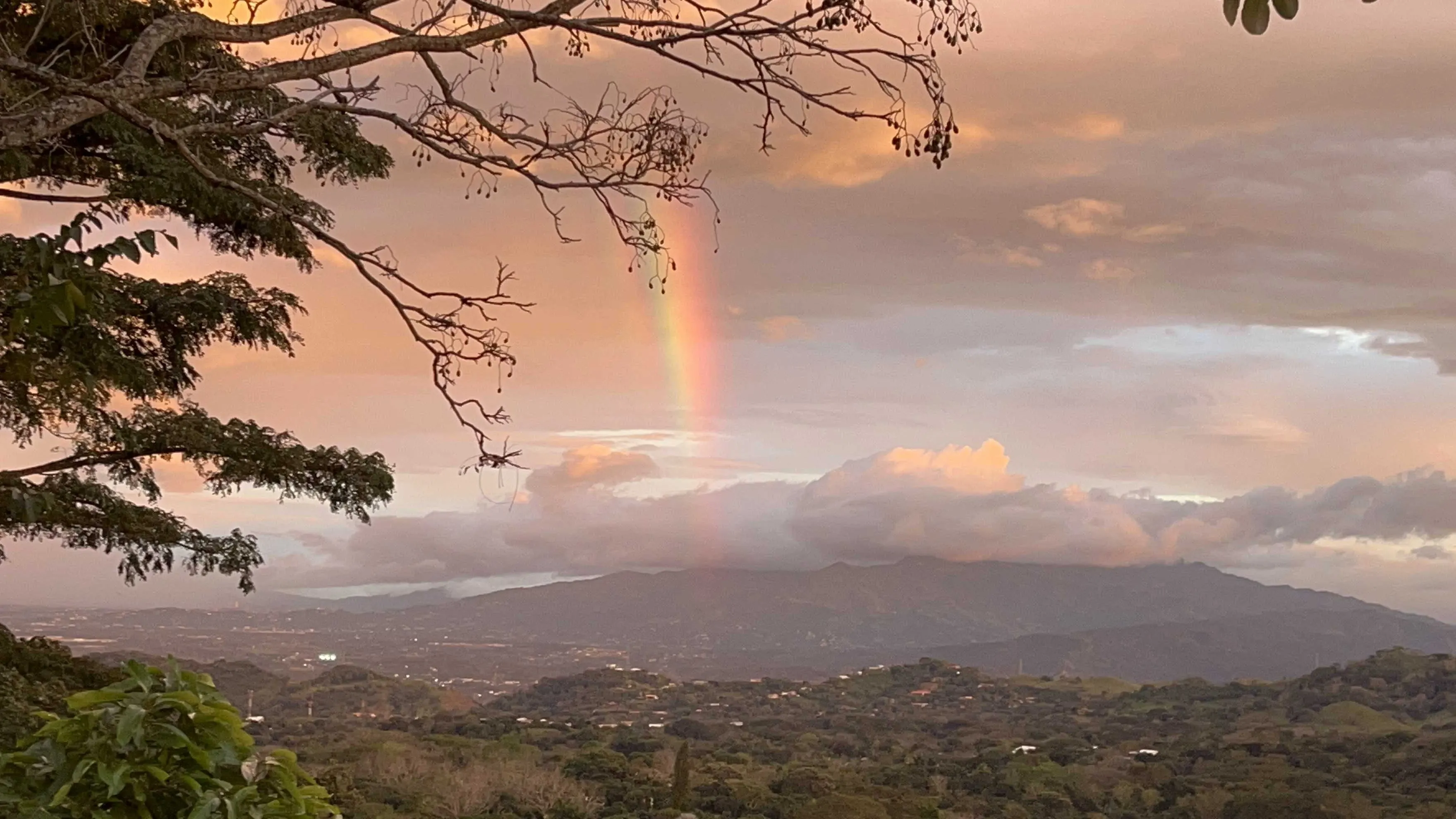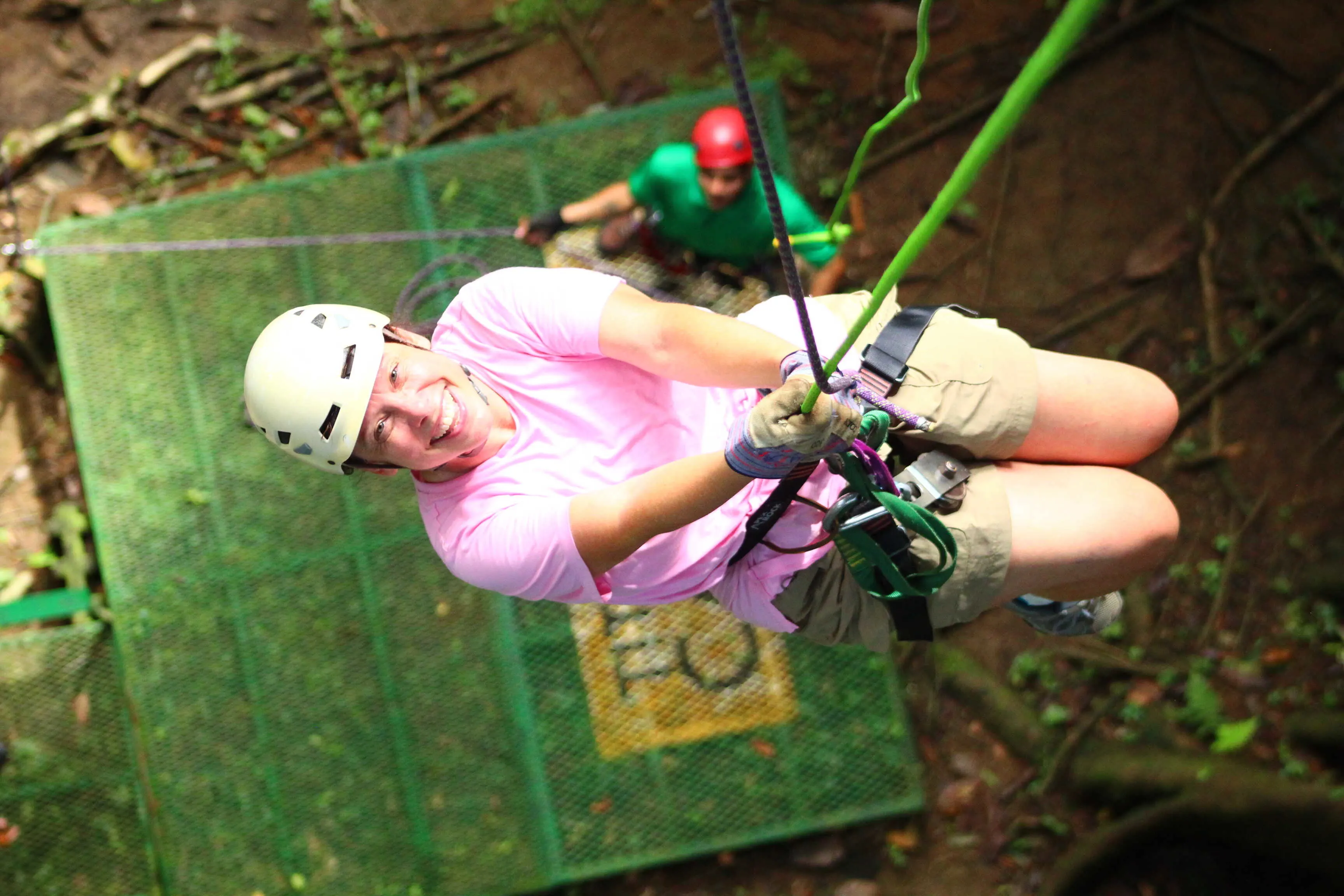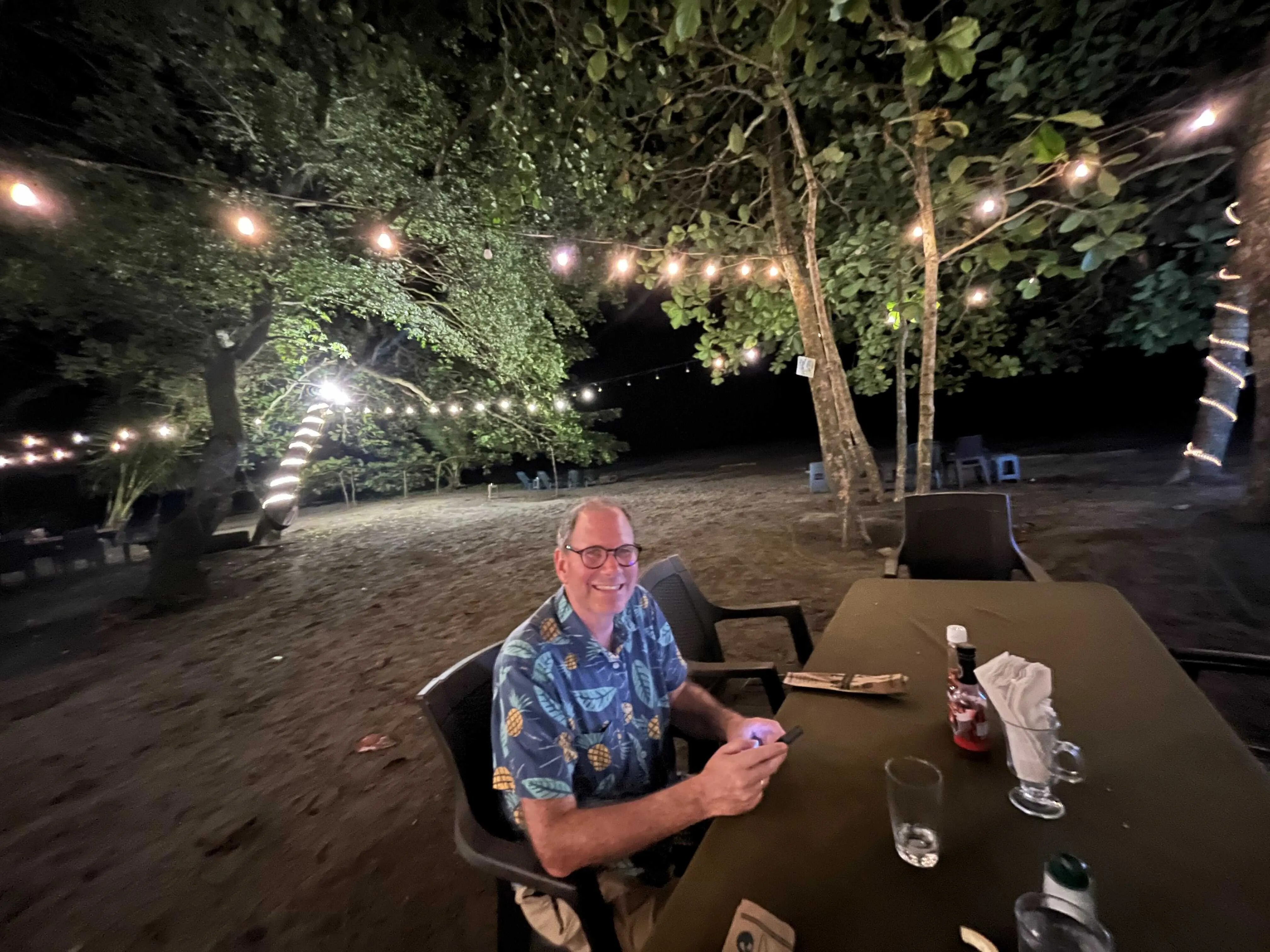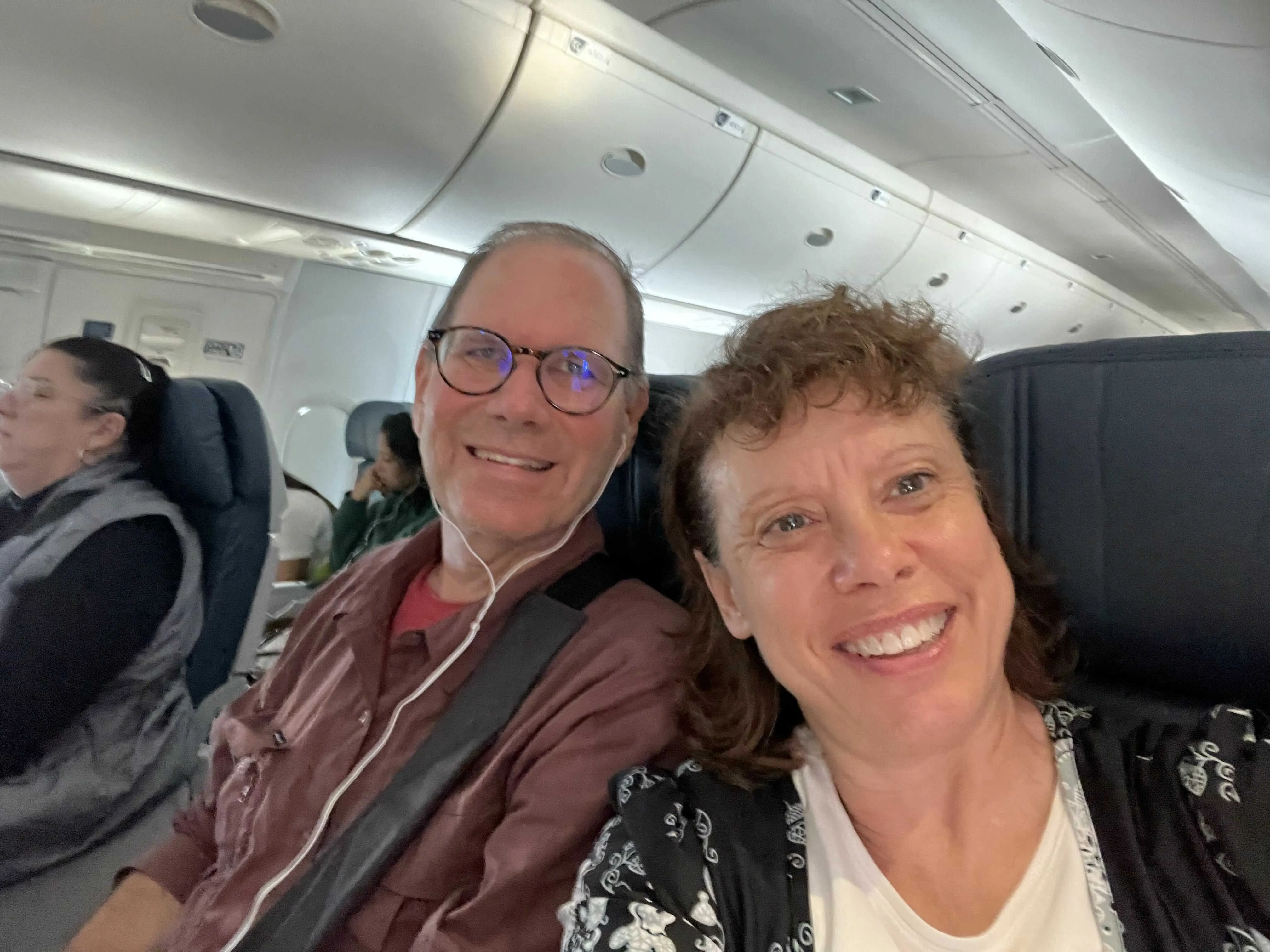Our fourth and final week in Costa Rica brought us to the southern Pacific coastline, a paradise of breathtaking landscapes, vibrant wildlife, and unforgettable experiences. This week was bittersweet as we reflected on the joys of the past month while preparing to leave this magical country and the incredible friendships we’d made.
We’re Amy and Jim, Midwestern attorneys contemplating retirement overseas. This month, we have been exploring Costa Rica as the winners of International Living’s Test-Drive Your Retirement Overseas contest.
The World’s Best Retirement Havens for 2025
The World’s Best Retirement Havens for 2025
20 Countries Compared, Contrasted, Ranked, and Rated. You don’t have to be rich to enjoy a pampered retirement, you just need to know where to go. With our 34th Annual Global Retirement Index, our experts hand you a detailed roadmap. Details—and a Special Offer—Here

By submitting your email address, you will receive a free subscription to IL Postcards and special offers from International Living and our affiliates. You can unsubscribe at any time, and we encourage you to read more about our Privacy Policy.
Our First Three Weeks in Costa Rica

In our first week, we settled into a rental apartment in the picturesque mountain town of Atenas in the Central Valley. From there, we embarked on day trips with family to the Poás and Arenal volcanoes, as well as the charming town of La Fortuna.
During our second week, we journeyed to Quepos, located on the southern Pacific coast. Although Tropical Depression Sara caused nationwide flooding and disrupted our plans to visit Manuel Antonio National Park, we still made the most of our time. We marveled at Capuchin monkeys leaping onto our hotel balcony, embarked on a thrilling night hike to a waterfall, and savored freshly brewed coffee and chocolate on farms where they are grown and processed.
In week three, we crossed the mountains to Costa Rica’s Caribbean coast, visiting the beach towns of Cahuita and Puerto Viejo. These destinations offered the perfect mix of nature hikes, snorkeling, and leisurely beach days. We also explored the turtle nesting grounds and wildlife estuaries of the remote Tortuguero National Park, a highlight of our journey.
The Southern Pacific Coast: Highlights and Discoveries

Quepos: Where Nature Meets Adventure
Returning to Quepos in early December, we were greeted by sunshine and clear skies after weeks of rain. The area revealed its famed golden beaches, abundant wildlife, and breathtaking sunsets that have enchanted travelers for decades.
Affordable Luxury in the Off-Season
Costa Rica’s off-season presented an incredible opportunity for upscale stays at unbeatable rates. We stayed in three resorts priced between $69 and $109 per night, each offering upgraded rooms and breakfasts—a true indulgence on a budget.
Manuel Antonio National Park: A Jungle Beach Paradise
After a three-hour drive down the coast from Atenas, we arrived at Manuel Antonio National Park for our timed entry at noon. The park is the busiest of Costa Rica’s parks, and tickets must be purchased online in advance ($16 per person for non-residents). It allows entry to a limited number of visitors daily, offering a unique opportunity to observe wildlife where the jungle meets natural beaches. As with all national parks here, you’ll miss much of the wildlife without a guide and their powerful scopes. Although we try to stick to a budget, we usually hire a guide.
You can walk the park trails alone, hire a guide in advance through a site like Viator or GetYourGuide (the going rate is $28–$60 per person), or negotiate a lower rate with a guide at the park gate. We hired David at the gate for about $20 per person. Since it was the end of a slow day, we had a private tour lasting over an hour. We saw our first three-fingered sloth, a very vocal howler monkey, crabs, basilisk lizards, and several types of iguanas.
We ended the day enjoying the postcard-perfect white sand beach outside the park. Later, we watched the sunset from a cliffside restaurant overlooking the park that our guide recommended. The dinner—featuring filet mignon, a tuna poke bowl, and a flambéed Maracuya dessert with custard—was one of the best and most memorable meals of our trip.

La Foresta Nature Resort: Wildlife and Adventure
This hotel is conveniently located about fifteen minutes from the park and is equipped to host tour groups. At night, we were serenaded by a raucous chorus of frogs, and in the morning, we spotted a flutter of butterflies, a charm of hummingbirds, and a mess of iguanas just steps from our two-bedroom cabina (small cabin). Amy particularly enjoyed this hotel for its excellent zipline course, which offered a thrilling ride over the treetops, past sloths and monkeys—a highlight of the trip for her. Meanwhile, Jim preferred to stay grounded, relaxing with a book under the shade of an umbrella by the pool.
Uvita and Marino Ballena: The Magic of the “Whale’s Tail”
We continued our journey down the coast to the surfing town of Uvita, home to Marino Ballena National Park. This park is famous for the “Whale’s Tail,” a unique natural rock and beach formation that is visible and accessible only during low tide. We timed our walk for early morning to ensure we could explore it and return before high tide. At 7:30 a.m., the area was enveloped in an eerie, peaceful silence, as we were nearly alone at this remarkable confluence of two beaches.
Vista Ballena Hotel: A Room with a View

With breathtaking views of the Whale’s Tail from its luxury infinity pool, this hotel was perched atop a mountain directly overlooking the national park. For dinner, we opted for carry-out, allowing us to enjoy the stunning pink and orange sunset over the Pacific from our balcony. The highlight of our stay came the next morning, as we watched nature unfold from our third-floor balcony. A raucous swarm of parakeets flew past our window at dawn, waking us with their lively chatter, while a troop of capuchin monkeys leaped gracefully from branch to branch in a nearby tree. We wrapped up our visit with a relaxing few hours soaking up the sun by the infinity pool. Leaving such a magical place was truly difficult!
Esterillo Este Beach: A Hidden Gem
Based on a local’s recommendation, we discovered this nearly deserted beach and a charming five-star hotel along the oceanfront. In early December, the rate was surprisingly affordable—under $90 per night, including a room upgrade and breakfast. We learned that this beach, along with nearby Bejuco Beach, is known for its year-round tranquility, in contrast to the lively party atmosphere of its northern neighbor, Jaco Beach.
As we watched the final sunset of our trip, the mesmerizing sound of the waves created a perfect ending to the day. The next morning, we woke early to stroll along the beach in search of birds and scarlet macaws. Just as we had given up and sat down to breakfast, two scarlet macaws appeared in the tree beside us, providing a magical conclusion to our stay.
Get Your Free Costa Rica Report Here
Get Your Free Costa Rica Report Here
Learn more about Costa Rica and other countries in our daily postcard e-letter. Simply enter your email address below and we’ll send you a FREE REPORT - Explore the Old World in Laidback Costa Rica.

By submitting your email address, you will receive a free subscription to IL Postcards and special offers from International Living and our affiliates. You can unsubscribe at any time, and we encourage you to read more about our Privacy Policy.
Practical Tips: Helpful Advice for Traveling in Costa Rica

Here are a few valuable tips we’ve learned from our travels in Costa Rica:
Use the Local Currency (Colones)
Some online sources suggest that you can rely on credit cards or U.S. dollars in Costa Rica, but we strongly recommend carrying colones (CRC). While a few hotels requested cash payments in U.S. dollars, we found that local currency was essential for most transactions. Here’s why:
At ferias (farmer’s markets), sodas (family-owned restaurants), and highway toll booths, colones are often the only accepted form of payment. Using local currency is both practical and respectful.
Many merchants add a 13% surcharge for credit card transactions to cover processing fees, making cash the more economical choice.
ATMs in every town dispense cash, but usually in colones. In Atenas, for instance, only one ATM dispenses U.S. dollars, and finding it often requires insider tips from expats.
Even if prices are posted in dollars, ask merchants to process your credit card purchases in colones. This avoids unfavorable exchange rates, as merchants often estimate $1 USD at 500 CRC, while banks offer a better rate—about 507 CRC when we visited in November 2024.
Using colones also enhances the cultural experience. You’ll appreciate the vibrant artwork on the 2,000 colones note (about $4), featuring swimming turtles, and feel the difference in weight between the sturdy 500 colones coin and the light 10 colones coin (worth about 2 U.S. cents).
Tipping
Tipping is not typically expected in Costa Rican restaurants, as a 10% service charge and 13% VAT are already added to the bill. However, foreigners and expats often choose to tip an additional 10% as a gesture of appreciation. This is particularly meaningful, as many Costa Rican workers earn a fraction of what U.S. workers make. Your tip can be a welcome and significant gift.
Special Dietary Needs
Costa Rica is exceptionally accommodating for dietary restrictions:
Vegetarian and Vegan: Many menus feature vegan and vegetarian options, with dishes built around locally grown, fresh produce.
Gluten-Free: Many restaurant owners cook with gluten-free ingredients and can easily adjust meals to suit your needs.
Diabetic-Friendly Options: Sugar-free products are available, but sugar is often added to fruit drinks and other naturally sweet dishes. Be sure to order sin azúcar (without sugar) when necessary.
With its abundant fresh fruits, vegetables, and locally sourced proteins like rice, beans, chicken, and fish, Costa Rica is a paradise for health-conscious diners. Most meals are made to order, making it easy to customize your dish to suit specific needs.
Closing Reflection: A Life-Changing Journey

Adventure of a Lifetime
This past month has been the adventure of a lifetime, and we are deeply grateful for the opportunity to “test drive our retirement” in Costa Rica. Sharing our experiences with the International Living community has been equally rewarding.
We set out to make the most of our time here, free from our usual obligations, and immerse ourselves in meeting new people, exploring local culture, and traveling to different regions. What we didn’t expect was how quickly we’d feel connected to our temporary home and the people we met along the way. After just one month, we’re already discussing where to visit on our next trip.
With Jim’s Spanish skills improving and our confidence in navigating Costa Rica growing, we’re considering a more ambitious adventure next time—perhaps backpacking into Corcovado National Park on the Osa Peninsula or exploring the remote mountain towns bordering Panama. Any future trip will undoubtedly include a stop in Atenas to visit our gracious hosts at Hotel Villas de la Colina, Kevin and Tannia, who shared invaluable insights about living in this beautiful yet occasionally challenging country.
Will We Retire in Costa Rica?
This journey taught us a lot about ourselves and what we need in a retirement destination. We’ve realized that we thrive in areas where we can connect with others, contribute to a community, and get out of the house daily. We also want a place that supports our love for freelance writing, outdoor activities like hiking, and opportunities to travel and explore nearby destinations.
Costa Rica ticks many of these boxes. It offers a stable democratic government, a central location for travel across the Americas, reasonable pensioner visa options, and an affordable healthcare system.
The Central Valley, particularly Atenas, has a unique charm that’s easy to see why so many retirees choose it as home. With its claim of having the “best climate in the world” (a consistent 73–83°F year-round), homes require neither air conditioning nor heating. The cool breezes, stunning mountaintop views, and proximity to Pacific beaches just a short drive away make it ideal. Many retirees we met live comfortably on Social Security and value the nearby international airport and access to top-tier healthcare in San José.
Costa Rica has truly captured our hearts. As our plane took off from San José, we were surprised by how sad we felt to leave. Whether as full-time residents or frequent visitors, we know Costa Rica will remain a special part of our lives.
What’s Next?
Costa Rica is just one stop on our journey to find the perfect place to retire. In October, we explored the Provence region of France, and in January, we’ll take a short trip to Portugal. Stay tuned to our Facebook page, Travels with Amy and Jim, as we continue our search.
Do you have a suggestion for where we should travel next? Let us know! There’s a whole world out there, and we’re eager to explore it.
Until next time, Pura Vida!
Get Your Free Costa Rica Report Here
Get Your Free Costa Rica Report Here
Learn more about Costa Rica and other countries in our daily postcard e-letter. Simply enter your email address below and we’ll send you a FREE REPORT - Explore the Old World in Laidback Costa Rica.

By submitting your email address, you will receive a free subscription to IL Postcards and special offers from International Living and our affiliates. You can unsubscribe at any time, and we encourage you to read more about our Privacy Policy.
